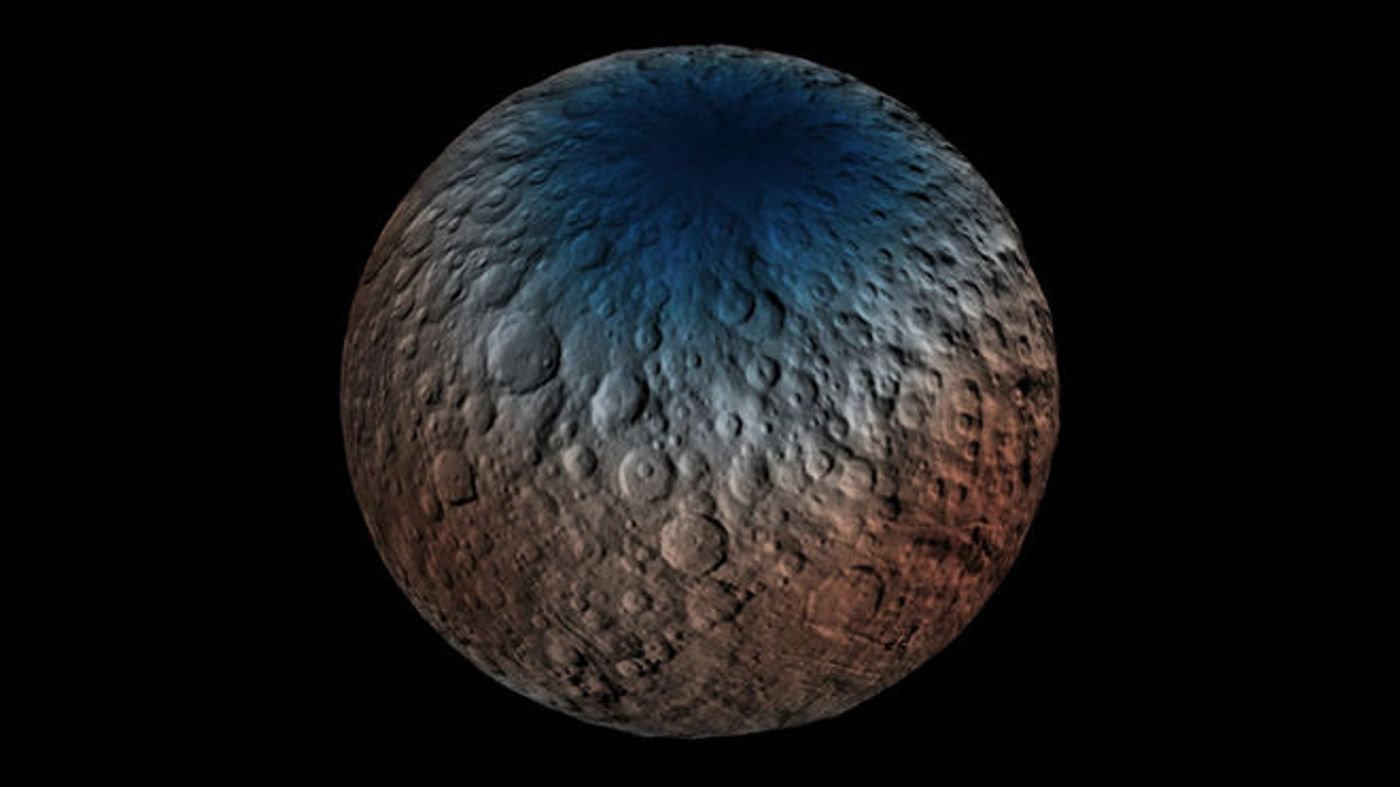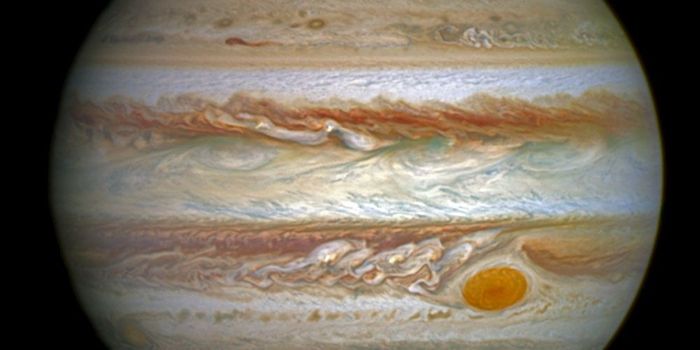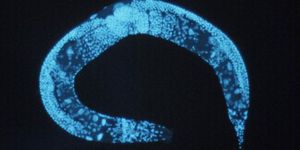Ceres is Apparently a Lot Icier Than Originally Thought
Ceres, once known to be the largest asteroid in the Asteroid Belt in between Mars and Jupiter, was re-classified as a dwarf planet in recent years, making it the closest dwarf planet to Earth. Despite how close it is, and all of the observations we’ve made, we still have many questions about it.
Image Credit:
Ceres is a very round object, and from most of the pictures you may have seen of Ceres, it pretty much looks like a rock. If we told you Ceres had a lot of ice on it, you’d probably look at us like we had three heads, but according to two new related studies that are based off of data from the Dawn spacecraft that's currently probing the dwarf planet, Ceres has a lot more ice than previously thought.
Images taken by NASA’s Dawn spacecraft depict Ceres to be covered in craters, and the material making up its surface is highly reflective of the Sun’s light because of the salts in the rocks, making it pretty easy to get a good picture of Ceres. On the other hand, perhaps it’s what’s under the surface that tells the whole story about Ceres.
Both studies seem to find ice in different places thanks to data accumulated by the Dawn spacecraft, which arrived at Ceres last year.
The Nature Astronomy study, led by Thomas Platz of the Max Planck Institute for Solar System Research, Gottingen, Germany, suggests the dark craters on Ceres’ surface are acting as containers for hidden frozen water ice.
On the other hand, the study in Science, led by Dr Tom Prettyman from the Planetary Science Institute in Tucson, Arizona, suggests that water ice is to blame for the alterations in Ceres’ regolith, which were discovered by nuclear spectroscopy.
"On Ceres, ice is not just localized to a few craters. It's everywhere, and nearer to the surface with higher latitudes," Prettyman explained. "These results confirm predictions made nearly three decades ago that ice can survive for billions of years just beneath the surface of Ceres."
Even though said ice would be well-hidden, scientists believe they’ve found evidence of water ice near Ceres’ surface, a particularly important finding because water is one of the essential building blocks of life.
Although each study finds it in a different place and for different reasons, both seem to agree that Ceres is harboring ice that we didn’t even know existed there until now. The discoveries are exciting astrobiologists, because Ceres is nearby and would be fairly easy to study, compared to other dwarf planets, such as Pluto.
Ceres, in its current form, could be up to 10% water ice in composition, but we won’t know for sure until we study it up close. Further observations from Dawn may help answer some of the remaining questions, but since Dawn is still young in its exploration of the dwarf planet, we will certainly have more data in no time at all.
Source: NASA









